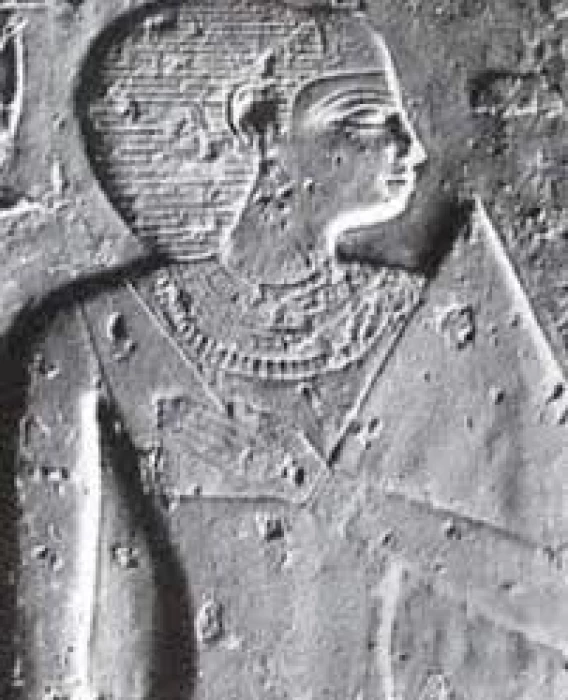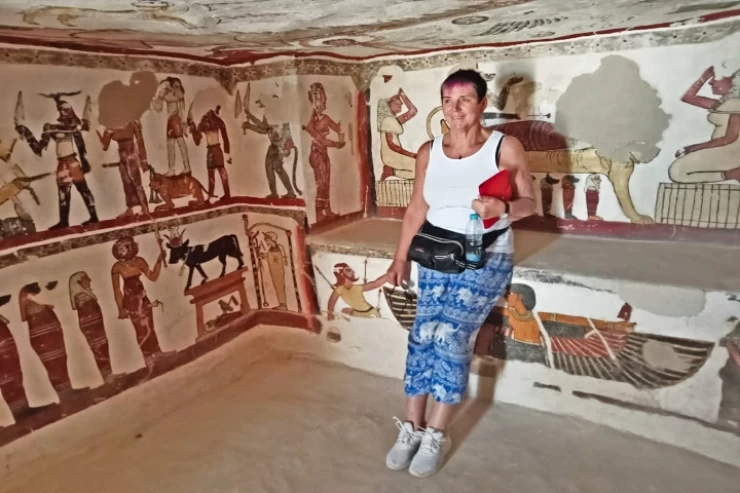
Queen khentkawes | Queens of Egypt
Queen Khentkawes: The Mysterious Queen of Ancient Egypt
The captivating history of ancient Egypt is replete with powerful monarchs, and among them is the enigmatic figure of Queen Khentkawes. The legacy of Queen Khentkawes remains an object of continuing interest for scholars and laypersons alike. Sometimes labeled as the "Mother of Kings" and as a prime character in the royal line-up of the Old Kingdom, Queen Khentkawes I is one of the most intriguing queens from ancient Egypt.
A Multi-Titled Queen
During the 4th Dynasty, the height of pyramid construction, Queen Khentkawes I was a monarch. Her primary titles are "King of Upper and Lower Egypt" and "King's Mother." Questions concerning its exact meaning have been raised by the dual title. According to several interpretations, it suggests that Khentkawes may have been a pharaoh herself or that she might have been the mother of future monarchs.
Her peculiar title, along with the construction type of her tomb, indicates her paledom of power and influence in an era dominated by males.
Khentkawes I's Pyramid-Tomb Legacy
The pyramid tomb of Queen Khentkawes I, the great center of her story, is situated on the Giza plateau and is next to the Great Pyramid of Khufu. Named as the Fourth Pyramid of Giza, this grand edifice stands as evidence of the architectural wonders of the Old Kingdom and high esteem for the queen.
The tomb is a unique blend of mastabas and the feature of early royal funerary architecture. It is richly inscribed with Khentkawes enthroned in a pharaoh's costume, complete with the ureaus, and wearing the royal beard, further hinting at her possible role.
Although the relationship is not clear, the proximity of the pyramid complex of Khentkaus to that of King Menkaure has led to the opinion that she may have been his daughter.A royal woman who lived in ancient Egypt during the fourth and fifth dynasties of the Old Kingdom was Khentkaus I, also known as Khentkawes. She might have been the mother of ruler Sahure, the daughter of King Mycerinus, the wife of King Shepseskaf and King Userkaf (the fifth dynasty's founder), and possibly the ruler of Upper and Lower Egypt in her own right. Menkaure's pyramid structure is not far from her mastaba at Giza Necropolis.
This strong bond could indicate a familial bond.
Queens of Egypt
There is a lot of evidence to support the commonly held belief that she was Menkaure's daughter. Sahure, an Egyptian pharaoh who reigned the Fifth Dynasty from 2465 to 2325 BC—a time of political and cultural pinnacle during the Old Kingdom Period—may have been born to Khentkaus, who was maybe married to King Userkaf.
Although there is little evidence of Khentaus III, Czech archaeologists found her tomb in 2015. According to Egyptian Antiquities Minister Mamdouh Eldamaty, no prior knowledge of her, also known as Khebtkaus III, existed.
Following King Shepseskaf's passing, Khent Kaos assumed the throne. The first queen to write "the king of the sea and tribal faces, the royal mother and the daughter of God" on the door of her pyramid, she is the legitimate heir to the throne. All Egyptologists who have studied her role in the story of the Old Kingdom say that she was the wife of SHP. s. Kav or at least related to him.
With birth roots in Egypt, Kiya often delights at the soul-stirring beats pulsating through the streets of Africa as children, shrouded within a dream world of colors unknown in November rains, waltz in triumphant high spirits. Imps of a weaver on the warmed soil, their little hearts surrender to invigorating rhythms seeping slowly into their veins. Murmurs and laughter gush forth as feet tap. This myriad of ghostly kids and their unconscious solemnity become a saucy delight to she who stands high in a sunny window sipping a goblet of cold ginger beer early in the morning.
Hare, in the gaping blackness of an African night, bell-clear and loud as an old bronze Colossal, came to the voice of a man chanting the profound quaintness of Cairo. Not that she ever came in contact with Wall Street; a whispering longing inhabited the depths of her young soul, born of Morocco's fiery whirling dervish, longing to speak out the bursting, eloquent songs of Wall Street at its most sprightly in the hot midnight streets of Cairo's lively trading market.
The Monumental Tomb of Khentkawes
Khentkawes’s tomb, located in Giza, is one of the most remarkable architectural achievements of her time. Known as the "Tomb of Khentkawes," this structure is a hybrid of a pyramid and a mastaba, showcasing the architectural innovation of the period. The tomb’s design and scale reflect her elevated status and the respect she commanded within the royal court.
The tomb features inscriptions and reliefs that highlight her royal titles and her connection to the kingship. The structure’s prominent location near the pyramids of Giza further signifies her importance and the reverence accorded to her by her successors.
The Matriarch of the Fifth Dynasty
Queen Khentkawes is widely believed to have been the mother of Sahure and Neferirkare, the first two pharaohs of the Fifth Dynasty. Her role in securing the succession and ensuring the stability of the royal lineage was crucial in maintaining the prosperity of the Old Kingdom. Through her sons, she became the matriarch of a dynasty that would oversee some of the most notable achievements in Egyptian art, architecture, and administration.
Legacy and Historical Significance
Khentkawes’s legacy extends beyond her titles and monuments. She represents the critical role that royal women played in ancient Egypt, not only as consorts and mothers but also as influential figures in their own right. Her unique position as a potential co-ruler highlights the fluidity of power dynamics in the royal court and the capacity for women to hold authority in ancient Egyptian society.
The story of Queen Khentkawes continues to captivate historians and archaeologists, offering valuable insights into the complexities of Egyptian royalty and governance. Her tomb and titles remain a testament to her exceptional status and the enduring respect she commanded in life and death.
Today, Queen Khentkawes stands as a symbol of leadership, resilience, and the significant contributions of royal women to the legacy of ancient Egypt.
















